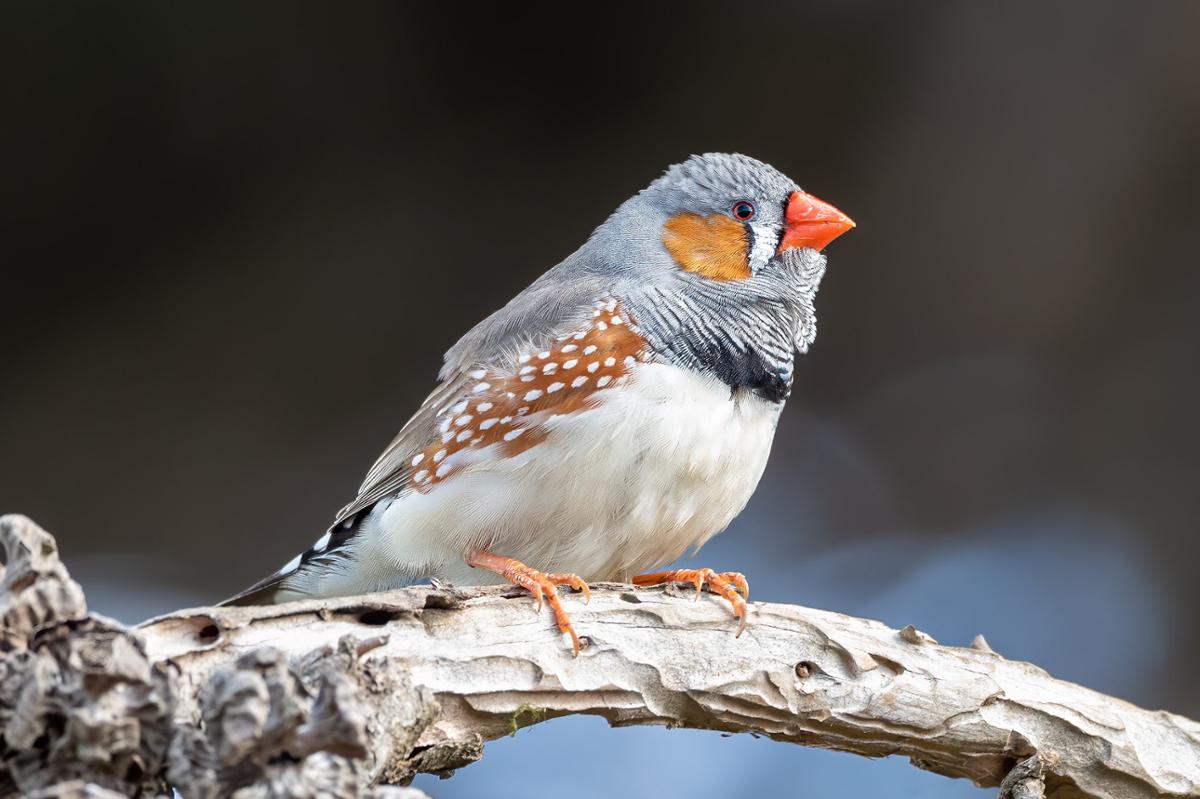D: Which paint color do you like better for my office, Yaël? Lava Red or Scarlet?
Y: Have you considered anything less… painfully vibrant?
D: Hey, a lot of people like red.
Y: Like who?
D: Well… zebra finches, for one. Males have red beaks and females love them.
Y: A zebra finch might have a hard time deciding between this color pair.
D: Because they’re both equally fantastic choices?
Y: No, because researchers found that zebra finches categorize hues from light orange to dark red into two distinct groups—either orange or red. In an experiment, researchers picked eight hues that represented typical male beak colors. They showed female finches a set of quarter-sized paper discs, some of which had two tones, and some of which had one solid color. The researchers taught the birds that if they flipped over the bicolor discs first, they received a treat. Then, they tested whether the finches would flip over the bicolor disc first even if the bicolored discs featured colors close together on the color spectrum. Interestingly, the finches seemed to perceive a boundary line between orange and red. They were better at distinguishing between two colors that were on opposite sides of the boundary line than two colors on the same side, even if the colors in the pairs were equally far apart on the spectrum. Humans categorize colors like that too, which implies that our perception of color has deep biological roots.
D: So you’re telling me it doesn’t really matter which paint hue I choose, since both are red.
Y: Sure, but I’m also telling you to consider a tasteful gray.










